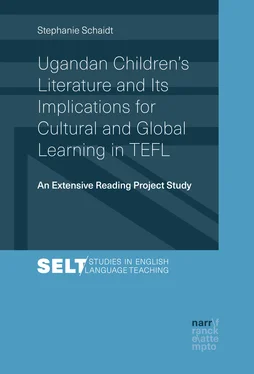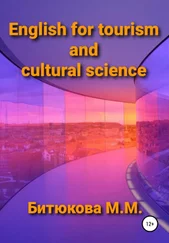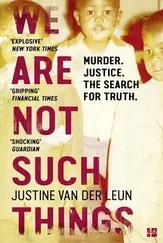A central aspect of his approach is the respect for diversity. Wintersteiner holds that hybridity should not be regarded as something exceptional but rather as something normal. It should be represented in both the literary texts and methods used in the classroom, he argues, pleading for a “ Poetik der Verschiedenheit [poetics of diversity]” (2006a). Similarly, in TEFL, Hallet (2002) promotes an intertextual approach to ELT. He is of the opinion that there is always a multitude of texts required to represent culture(s). In a postmodern manner, he refers to the foreign language classroom as a hybrid space of discourses in which meaning is created through a “ Spiel der Texte [game of texts]” (see title of the book Fremdsprachendidaktik als Spiel der Texte und Kulturen ).
Scholars have also repeatedly pointed to the need for an extension of the canon. The content of FLT should do justice to the diachronic, geographic and cultural diversity of the target language, they argue. Fäcke (2006) and Freitag-Hild (2010a) plead for an integration of postcolonial and hybrid texts, i.e. sub-Saharan African texts and fictions of migrations. Alter (2015) stresses that the texts should go beyond national and ethnic otherness. According to her, the realistic fiction about multicultural characters which is commonly used in the EFL classroom rather reinforces stereotypes than deconstructs them. She argues for the integration of texts that talk also about other aspects of otherness (e.g. sexual orientation, gender identity, religion) and that “do not limit multicultural protagonists to mere problem-identities but which depict multicultural protagonists who experience fantastic adventures for their own sake” (ibid., p. 17).
Furthermore, scholars (Alter, 2012; Bland, 2012; Bland & Strotmann, 2014; Hammer, 2012b) also point to the potentials of fiction for global learning. They suggest fiction on global issues such as organ donation, cancer, environment issues, war, etc. for classroom use. According to Alter (2012, p. 8), “global literature” may both give insights into a specific culture but also into issues that appear across geographic and language borders, such as grief, sickness and poverty. She considers particularly “global children’s fiction” as suitable for giving an insight into worlds which are different and appear foreign:
Den jungen Lesern begegnen in den Erzählungen Protagonisten, die sich in einem gleichen Lebensabschnitt befinden, die eigentlich ähnliche Erlebnisse, Träume und Ängste haben; die sich dann aber auf Grund ihrer dennoch besonderen Situation mit ganz anderen Themen und Bürden auseinandersetzen müssen. [Young readers encounter protagonists in the narratives who are in the same stage of life and have similar experiences, dreams and fears but because of their specific situation they have to deal with completely different issues and problems.] (Ibid.; my translation)
Similarly, Bland (2013, p. 114) considers “discussing fundamentally serious issues with the aid of children’s literature rewarding and satisfying for pre-adult readers”. She points to the importance of an apprenticeship in critical reading in a postmodern age:
The growing lack of belief or confidence in metanarratives […] demands a balancing opportunity for empowerment through education, specifically through a literature apprenticeship, to read the world critically, constructively and purposefully, with the pedagogical promise of being able to influence outcomes at least to some extent and therefore have choices in life. (Ibid., p. 111–112)
Drawing on the first Oxfam principle of global education “asking questions and developing critical thinking skills”, she suggests various texts that deal with race, class, gender, ecocritical issues and human rights for use in the EFL classroom (ibid., pp. 219–253).
Having looked into only benefits of literary texts for cultural and global learning so far, a turn to problematic aspects is now required. Despite the various potentials literary texts offer, the use of such in the context of cultural or global learning also carries various inherent risks. The danger of contrastive hermeneutics, in which ‘the other’ is excluded or stigmatised, has already been elaborated on in Chapter 2. In the context of using literary texts for cultural or global learning, the risk of the functionalization of literature also needs to be pointed out. Fiction is art and should not be mistaken for a supplier of factional information; its literary value always has to be acknowledged. In fact, the potentials of literary texts in the foreign language classroom go far beyond providing an insight into regional studies. As O’Sullivan and Rösler (2002, p. 81) state, literary texts
sind keine sekundären Sachtexte, sondern tragen gerade auf der nicht-kognitiven Ebene dadurch, dass sie Perspektivenwechsel, Empathie usw. ermöglichen, auf besondere Weise zum Sprach- und Kulturerwerb bei. [are no secondary non-fiction texts but contribute particularly on the non-cognitive level in a special way to learning about language and culture, by enabling changes of perspectives, empathy, etc.] (My translation)
They are often much more successful in touching upon the readers’ emotions than non-fictional texts. The Ugandan writer Monica Arac de Nyeko (Patel, 2009) points out in an interview: “Fiction […] often unpacks the bigger and more complex issues, by giving these collective memories a human and much more intimate face and story”. Still, when literary texts are used in the classroom, they serve a certain function and, therefore, “it is rather difficult to see literature in ELT beyond functional contexts” (Alter, 2015, p. 68).
In addition to this, fiction should not be equated with reality. Even literary texts written in a realistic mode do not mirror a given reality but instead rather create it. According to Iser (1971, p. 70) “no literary text relates to contingent reality as such, but to models or concepts of reality, in which contingencies and complexities are reduced to meaningful structure”. Literary texts are, therefore, not entirely mimetic; they may reflect upon reality but can also change it. As Gohrisch and Grünkemeier (2012b, p. 15) state, literary texts “juxtapose and negotiate conflicting perceptions of realities, interweaving them with desires and even utopian ideas”.
When considering the implications of fiction with regard to cultural and global learning, a further key aspect is text selection. Alter (2015, p. 77) points to the responsibility of teachers and educators in this context. They not only need to choose interesting reading materials which motivate the students to read but also keep in mind questions of ethics:
What if a teacher decides to develop students’ identity by teaching literature that a surrounding community may consider to be harmful, for example when it demonizes or praises homosexual relationships, neutrally presents teenage pregnancy, fosters revolutionary political ideas or other values that some see as immoral or unethical?
Although I acknowledge this responsibility and reflect upon my own text selection in Chapter 4.1, I consider it as important that students in their apprenticeship in critical cultural literacy (Bland, 2013) increasingly develop judgement about the argumentation of a text. Instead of over-emphasising the pre-selection of reading material, the students should, therefore, be presented as much as possible with a multitude of perspectives so that they are given the opportunity to form their own opinions. This opportunity may be provided by an extensive reading project. The key principles of extensive reading will be explained in the following.
3.3 Extensive Reading in the EFL Classroom
Extensive reading, also referred to as pleasure reading (Mikulecky, 1990), fun-reading (Hermes, 1984) or free voluntary reading (Krashen, 1993) is recognised as one of the reading styles applied in the EFL classroom. Bamford and Day (2004, p. 1), experts in the field of extensive reading, define it as follows:
Читать дальше












